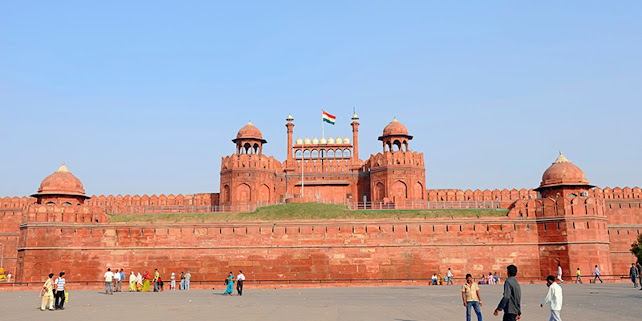Discovering the Timeless Beauty of Fatehpur Sikri
Introduction:
Nestled on the outskirts of
Agra, India, Fatehpur Sikri stands as a testament to the grandeur and
architectural brilliance of the Mughal era. This UNESCO World Heritage Site,
often overshadowed by its more famous neighbor, the Taj Mahal, is a hidden gem waiting
to be explored. Join me on a virtual journey through the red sandstone marvelsof Fatehpur Sikri and unravel the mysteries of its past.
Historical Overview:
Commissioned by Emperor
Akbar in the 16th century, Fatehpur Sikri served as the capital of the Mughal
Empire for a short but significant period from 1571 to 1585. The city was
meticulously planned, blending elements of Persian, Timurid, and Indian
architecture. Unfortunately, Fatehpur Sikri's reign as the imperial capital was
short-lived, as the scarcity of water in the region led to its abandonment.
Architectural Marvels:
As you wander through the
expansive complex, marvel at the intricate details of the Buland Darwaza, an
imposing gateway marking the victory of Akbar over Gujarat. Standing at a
towering height, the Buland Darwaza is a symbol of Akbar's religious tolerance,
with inscriptions from various faiths adorning its walls.
The Jama Masjid, one of the largest mosques in India, showcases a stunning blend of Persian and Indian architectural styles. Its vast courtyard and the intricately designed prayer hall are a testament to the craftsmanship of the Mughal artisans.
Explore the Diwan-i-Khas,
the Hall of Private Audience, where Akbar held discussions with his trusted
advisors. The central pillar with its beautifully carved brackets adds to the
regal ambiance of the hall. Nearby, the Panch Mahal, a five-story palace,
offers a panoramic view of the surrounding landscape.
Anup Talao, a unique water
tank with a central platform, was used for musical performances in the
emperor's court. The connecting bridge and the stunning pavilions surrounding
the tank transport visitors back to the Mughal era's cultural vibrancy.
Salim Chishti's Tomb:
One of the most revered
spots in Fatehpur Sikri is the tomb of the Sufi saint Salim Chishti. Pilgrims
and visitors from all walks of life come to seek blessings at this sacred site.
The delicate marble lattice work and the serene atmosphere make it a tranquil
retreat within the bustling city.
Preserving the Past:
While Fatehpur Sikri may be
a ghost town today, its well-preserved structures and intricate carvings
continue to captivate visitors. The Archaeological Survey of India has played a
crucial role in maintaining and conserving this historical treasure for future
generations.
Conclusion:
Fatehpur Sikri is more than
just an architectural marvel; it's a journey through time, offering a glimpse
into the rich cultural and historical tapestry of the Mughal Empire. As you
explore its courtyards, halls, and tombs, you can't help but feel the echoes of
a bygone era. So, the next time you find yourself in Agra, take a detour to
Fatehpur Sikri, and let its timeless beauty weave a story of its own.







Comments
Post a Comment